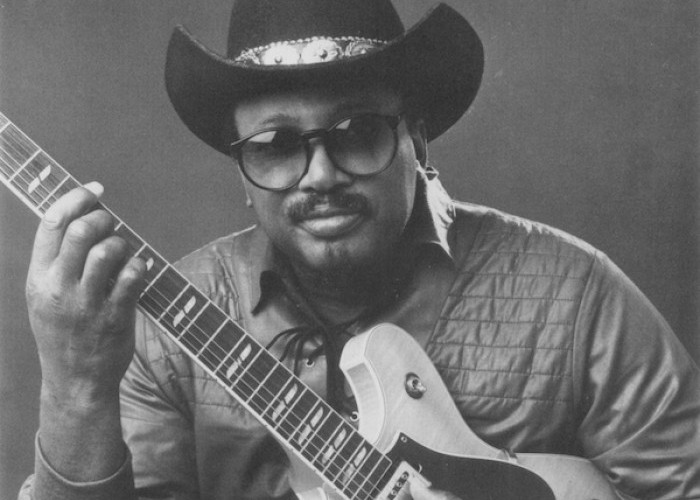Oct 28, 2025 10:47 AM
In Memoriam: Jack DeJohnette, 1942–2025
Jack DeJohnette, a bold and resourceful drummer and NEA Jazz Master who forged a unique vocabulary on the kit over his…

Otis Rush (1935–2018)
(Photo: Kirk West/DownBeat Archives)Guitarist and vocalist Otis Rush, long revered as a pioneer of Chicago’s blues scene, died on Sept. 29 at age 83.
Rush had not been an active performer in recent years, following a stroke he suffered in 2003.
His discography includes the album Any Place I’m Going (1998), which won a Grammy in the category Best Traditional Blues Album. The album featured a few of Rush’s original compositions, including “Keep On Loving Me Baby” and “Looking Back.”
His other Grammy-nominated albums are Ain’t Enough Comin’ In (released in 1994), So Many Roads (recorded live in Tokyo in 1975) and Right Place, Wrong Time (recorded in a San Francisco studio in 1971).
Rush was born in Philadelphia, Mississippi. As a teen in 1949, he moved to Chicago, where, over the course of his career, he would perform at venues on city’s West Side, South Side and North Side. Rush appealed to a diverse fan base drawn to his fiery guitar work and passionate vocals.
His early work on the Cobra label contains songs that became blues classics, including his debut single from 1956, a rendition of the Willie Dixon composition “I Can’t Quit You Baby.”
In Charles Carman’s article “The Worrisome Woes of a Workingman,” published in the April 7, 1977, issue of DownBeat, Rush said, “If you got a band and the band is playing well, and everybody acts like they’re ready to play, then it’s a nice feeling to be onstage. You get a good feeling playing the blues sometimes. You can let it out that way, but it doesn’t cure anything.”
In addition to influencing generations of blues artists, Rush also was admired by rock stars. He performed with Eric Clapton at the 1986 Montreux Jazz Festival, and he opened for Pearl Jam at Chicago’s Soldier Field in 1995.
Among the artists who have recorded “I Can’t Quit You Baby” are Led Zeppelin, John Mayall, Gary Moore and the Rolling Stones.
Rush was the subject of a tribute at the 2016 Chicago Blues Festival, which he attended. Among Rush’s accolades is his induction into the Blues Foundation’s Blues Hall of Fame (1984).
A statement on Rush’s website indicated that the funeral service would be private and that a public celebration of his work was in development. DB

Jack DeJohnette boasted a musical resume that was as long as it was fearsome.
Oct 28, 2025 10:47 AM
Jack DeJohnette, a bold and resourceful drummer and NEA Jazz Master who forged a unique vocabulary on the kit over his…

D’Angelo achieved commercial and critical success experimenting with a fusion of jazz, funk, soul, R&B and hip-hop.
Oct 14, 2025 1:47 PM
D’Angelo, a Grammy-winning R&B and neo-soul singer, guitarist and pianist who exerted a profound influence on 21st…

Kandace Springs channeled Shirley Horn’s deliberate phrasing and sublime self-accompaniment during her set at this year’s Pittsburgh International Jazz Festival.
Sep 30, 2025 12:28 PM
Janis Burley, the Pittsburgh International Jazz Festival’s founder and artistic director, did not, as might be…

Jim McNeely’s singular body of work had a profound and lasting influence on many of today’s top jazz composers in the U.S. and in Europe.
Oct 7, 2025 3:40 PM
Pianist Jim McNeely, one of the most distinguished large ensemble jazz composers of his generation, died Sept. 26 at…

Drummond was cherished by generations of mainstream jazz listeners and bandleaders for his authoritative tonal presence, a defining quality of his style most apparent when he played his instrument unamplified.
Nov 4, 2025 11:39 AM
Ray Drummond, a first-call bassist who appeared on hundreds of albums as a sideman for some of the top names in jazz…